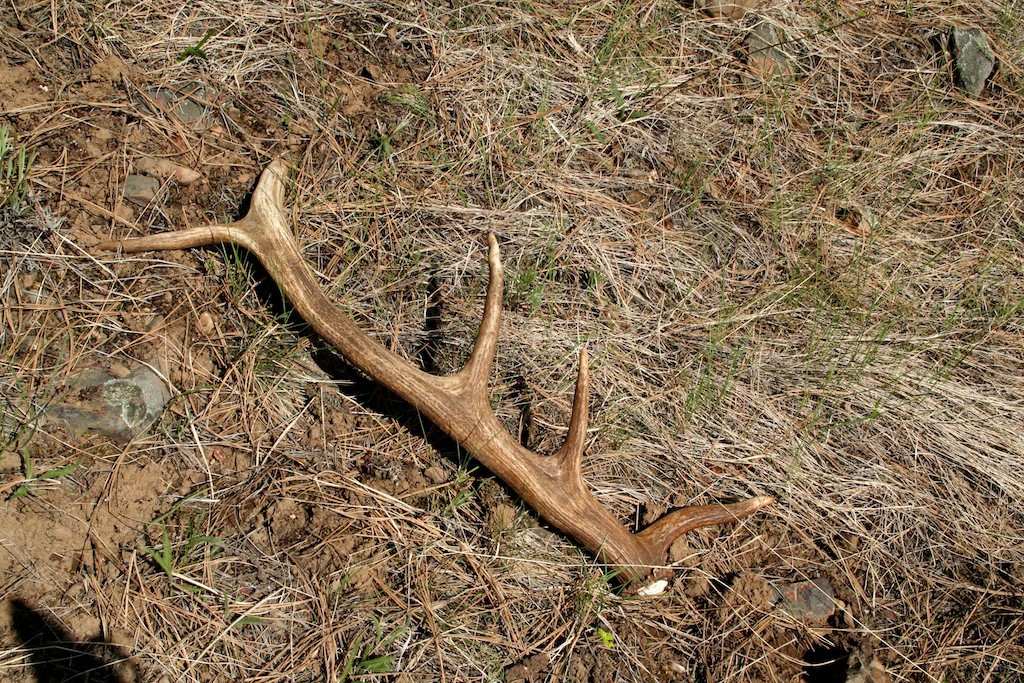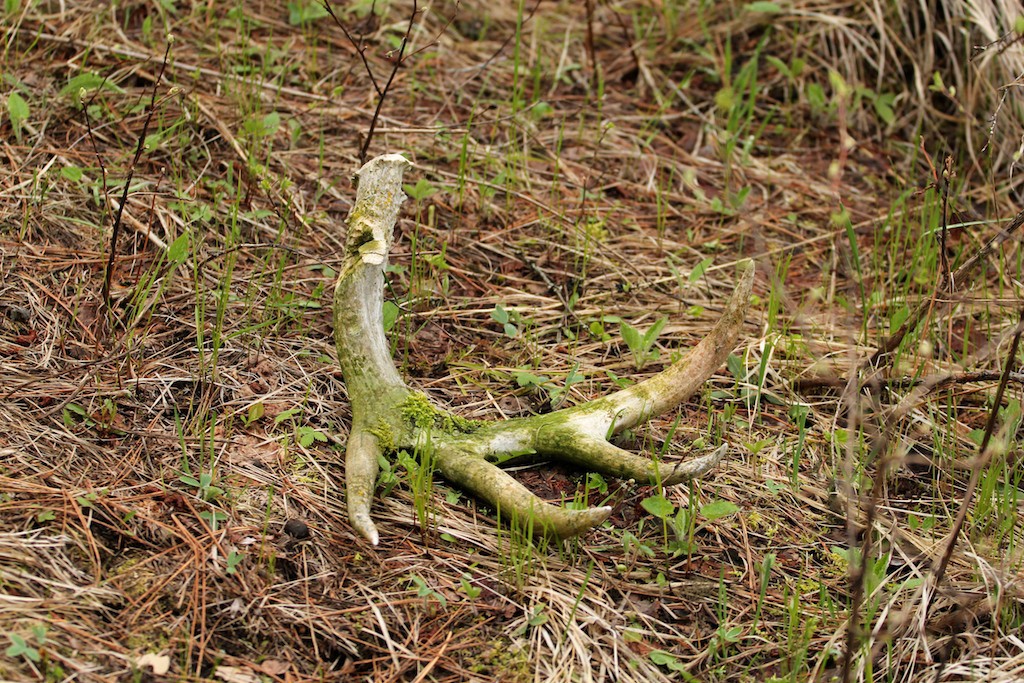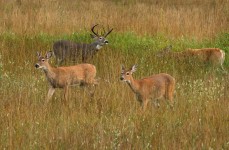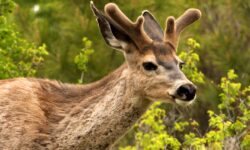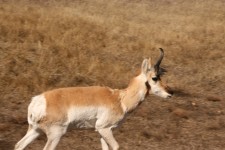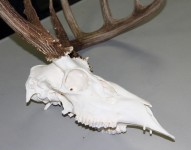As I walk through the woods, I spot one–not a spring wildflower, grizzly bear or ruby-crowned kinglet, but an antler. I feel like I won the lottery and in a way I have–nature’s lottery of being in the right place at the right time.
With the number of elk, moose, white-tailed deer, and mule deer living here, one would think we would be tripping over shed antlers left and right. In addition, the skeletons of winter-kill, old age or a predator’s meal are far and few between.
We don’t find bones and shed antlers everywhere because they are a part of nature’s cycle. Finding one is excitement for us, but it means nutrition for animals.
Shed antlers provide valuable nutrition
Antlers are a valuable source of calcium, phosphorus, mineral salts and even protein. Imagine how much nutrition a mouse obtains from a 45 pound moose antler.
For deer, elk and moose to grow antlers every year, they must obtain a significant amount of calcium from their vegetation-based diet. As the antlers grow, they draw from calcium reserves in their body that have been stored throughout the year.
What eats antlers?
Once shed, antlers provide valuable nutrition for mice, squirrels, chipmunks, porcupines and even coyotes, wolves and bears.
With that many animals ready to gnaw on antlers, finding one without chew marks is quite a feat. Depending on where the antler was shed, a several-year-old antler may only have a few chew marks, be reduced to the main beam or be completely consumed.
Amazingly, rodents can gnaw through antlers quite easily with their specialized teeth. Rodents, such as porcupines, squirrels, chipmunks and mice, grow strong, sharp front teeth. Only the front of their teeth are coated with a layer of hard enamel. So when the rodent gnaws on an antler, the back of the teeth wear away faster than the front resulting in chisel-shaped teeth. Thus, the rodent’s continuously growing teeth become sharper with use.
Wolves and coyotes, whose carnivorous teeth can easily break bones, will almost completely eat a moose antler. They particularly go after the softer portions of the moose antlers which are found in the center between the tines. All antlers develop an outer sheath of compact bone and a slightly spongier core.
As with mushrooms and cones, squirrels are known to haul off chunks of shed antlers and store them for later in holes in trees, under rocks or in their middens.
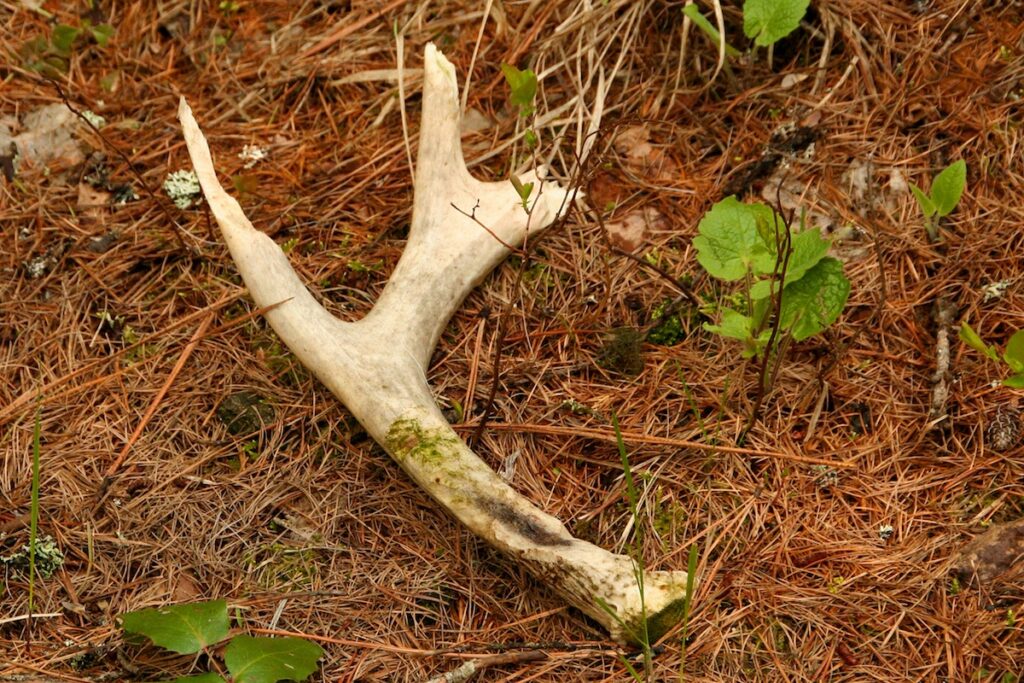
Eating their own antlers
One of the most unlikely consumers of antlers are the elk and deer themselves. Olaus J. Murie describes in his book Animal Tracks of seeing reindeer in Alaska chewing on each other’s antlers while they were still attached. Elk herds in Wyoming also have been observed chewing on each other’s still-attached antlers.
Since deer and elk don’t have teeth like rodents, they chew with their grinding (molariform) teeth. These teeth leave distinctive rough marks that look like the antler was gouged in a clumsy manner.
With antlers being chewed on while still attached and the number of animals that consume shed antlers, it is truly amazing we find any antlers at all.
Resources:

